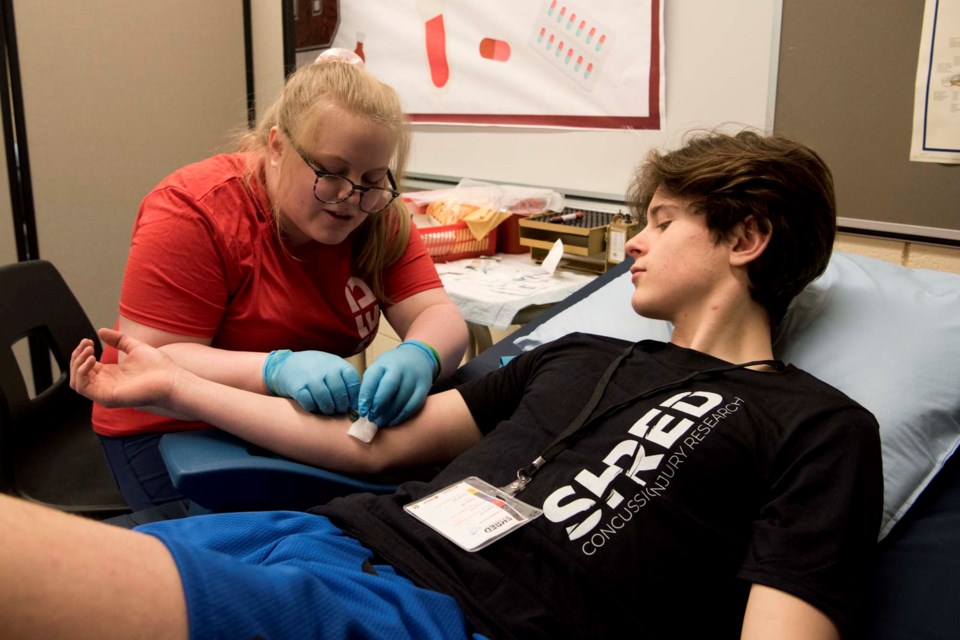Bellerose basketball player Cameron Knisely is no stranger to concussions, having had one just a few weeks ago.
“I was laying on the ground and a knee came into my head,” he said of the injury, which he described as minor.
On Wednesday, he was one of about 47 Bellerose athletes who volunteered to take part in the Surveillance in High Schools to Reduce Concussions and Consequences of Concussions in Youth (SHRED) study – a Canada-wide initiative backed by a $12-million grant from the National Football League that looks to study concussions in high-school athletes.
The study involves 10 universities, including the University of Alberta, and is billed as the biggest concussion study of its kind. Martin Mrazik, co-investigator for the study at the U of A, spoke to Bellerose students about it last November.
A concussion is an injury caused by a blow to the head or body that causes the brain to bounce or twist around in the skull, resulting in chemical changes and cell damage in the brain, reports the U.S. Centers for Disease Control and Prevention. Symptoms include headaches, nausea, memory problems and sensitivity to light.
There are about three million concussions in North America each year and about half of them happen to high school students, Mrazik said. Researchers know little about the long-term consequences of these injuries, and even less about how they affect youth.
SHRED aims to follow some 6,000 Grade 10 students for three years to determine how concussions affect their health, and what traits make them more likely to recover from such injuries.
Baseline tests
Wednesday’s tests were meant to set baseline physical and psychological conditions for the Bellerose participants. If they get a concussion in the next three years, they'll take the tests again in addition to getting an MRI scan so researchers can see how their brains and behaviour change, said Connie Lebrun, a U of A sports medicine doctor involved with the SHRED study. They'll also get free treatment for their concussions at the Glen Sather Sports Medicine Clinic.
Students completed memory and reaction-time games on laptops to test their cognitive skills, which concussions can degrade, and took a survey to measure their psychological traits – the SHRED team wants to see if certain personality traits help students recover from concussions faster, Mrazik explained.
Other tests had students jump as high as they could or walk a straight line to measure their sense of balance – the latter of which is affected in about half of all concussions. Students also provided a blood sample, which would help researchers determine if the body produces certain protein biomarkers after a concussion (similar indicators have been found for Parkinson’s disease). Bellerose sports medicine students helped administer some of these tests.
Grade 11 ringette player Charlotte Campbell said one of the more challenging tests was the SCAT5 – a standardized test for 22 concussion symptoms often given courtside to athletes that involves various memory and balance checks.
“Scientific research is really important,” she said, when asked why she enrolled in the study, and this study would help improve concussion treatments.
Mrazik said the SHRED team would test students at Bellerose and Paul Kane this April and hoped to enrol some 200 students total in this branch of the study. While it would be three years before the team could evaluate its data, Mrazik said the results could reveal better ways to treat concussions.
“If you have a certain blood biomarker, do we also see cognitive function to be poor? Do we also see psychological functioning to be off? What is the relationship?”
Questions on the study should go to [email protected].




